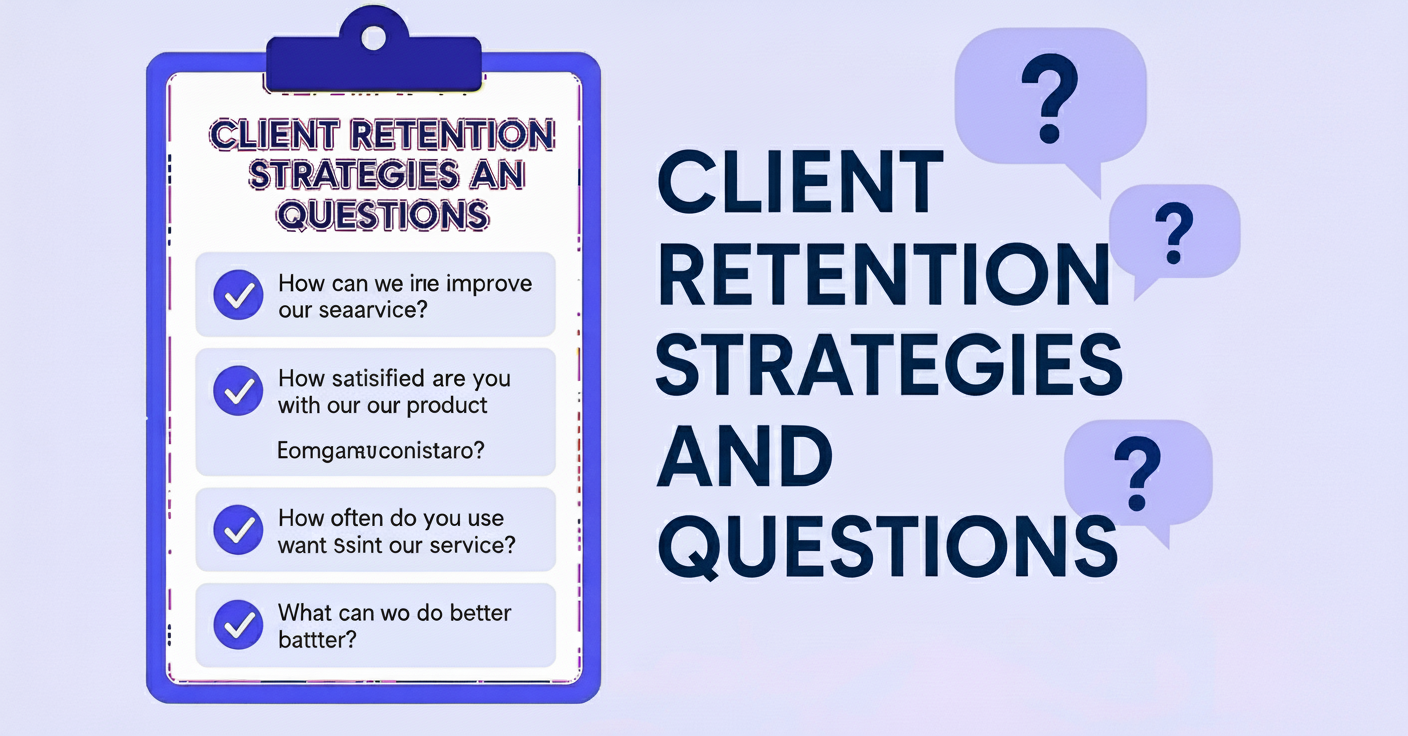
When businesses acquire a client, the real challenge isn’t winning them over once—it’s keeping them for years. Growth doesn’t come only from new acquisitions; in fact, most firms see greater returns by focusing on retaining existing clients. Retention is what moves the needle: a 5% lift can boost profits by 25% to 95%. At Nexus Expert Research, we help businesses turn data-driven insights into actionable strategies. In B2B industries, average retention rates sit around 75–76%, with top performers reaching the mid-80s. Repeat customers deliver about 65% of total revenue and often spend more than new ones. In other words, your existing client base is where most of your revenue and profit truly come from.
That’s why this blog outlines six practical strategies you can start applying this quarter—along with key survey questions—to strengthen retention, reduce churn, and maximize client lifetime value.
Measure the right signals
Data is valuable, but not all data is made equal. Consider your website’s Google Analytics dashboard. It can show you a hundred different things, and you might think that all of it is as valuable as the next data point. But that is not true. Data on the location of the user tells you where your ideal customer lives and what type of lifestyle they live, giving you insight into what they will be willing to pay for a solution to that problem.
Just like that, other data points offer different windows into customer behavior. That’s why you need to measure multiple signals—so you can spot where value breaks down. Your metrics should directly tie to two key performance indicators: churn (the number of customers who leave) and revenue (the amount of money generated).
If you don’t measure it, you can’t improve it. Focus on tracking:
- NPS (Net Promoter Score) – tells you how likely customers are to recommend you
- Transactional satisfaction – how happy customers are after a purchase or interaction
- Product usage – how often and how deeply customers use your product
- Time-to-value – how quickly users get value from your product
- Support tickets – how often customers need help
- Payment behavior – how reliably and frequently customers pay
Link these metrics to revenue churn—track usage monthly, NPS quarterly. When you connect these signals to dollar churn, even minor improvements can lead to big wins at the board level.
Companies that monitor multiple signals catch early warning signs and act before renewal windows close.
Close the loop fast
Please don’t get this wrong. Closing the loop may sound salesy, but it is not about the potential acquisition of the client. Instead, it is about customer experience. Closing the loop means responding to complaints and acting quickly. Trust is the foundation for continued business. And fast fixes rebuild trust.
Consider this: you provide communication software to a PC manufacturer. They use it to manage complaints from their buyers. If your service is slow or hard to use, their support team struggles, and they risk losing customers. To keep that client, you need to treat their problems as your own and solve them quickly.
Speed matters. If a customer gives you a low score, respond within 48 hours. Triage the issue, assign someone to take ownership, fix the problem, and follow up. Companies that do this often turn unhappy customers into loyal ones. This restores trust and reduces avoidable churn.
Set a service level agreement (SLA) and track resolution time in account updates. Customers pay attention to speed, and speed influences their behavior.
Personalize and segment engagement
Personalization means delivering relevant actions and messages for each account segment. When the service or product becomes overly personalized to an individual’s personality, it shifts from user-focused to user-led. It reduces friction and raises renewal odds.
Seventy-eight percent of customers expect personalization. Seventy-seven percent of business leaders name personalization a retention driver. Don’t spray the same message across all accounts—segment by Average Recurring Revenue (ARR), growth potential, and risk score.
High-value accounts get executive Quarterly Business Reviews.
Mid-tier accounts get targeted playbooks and triggered emails. Personalization reduces friction and raises the chance of renewal.
Onboard to value quickly
Onboarding is a value sprint. When you join a new account on a social media website, your initial goal is to connect with friends and communities that interest you. The algorithm should also recognize your preferences and show you relevant content. Clear milestones and early wins are what lock a customer in.
The time it takes for you to achieve your intended results from creating a new profile is known as Time-to-value, and if it slips, it can be a retention killer. Define milestones for week one, week four, and month three. Celebrate the first measurable win with the customer.
Build communities and advocacy
Communities let customers learn from peers and feel invested. They boost loyalty and referrals.
Communities work. They can improve retention by up to 54% and lift advocacy. Create focused spaces: private Slack channels, customer advisory boards, and sector roundtables. Run peer calls where customers share tactics, not pitches. Communities reduce support load and surface product ideas. They turn customers into advocates who refer and expand.
Embed retention into operations
Retention must be part of how the company runs. Make it a shared operational metric.
Retention must be operational. Link it to product roadmaps, success playbooks, and finance forecasts. Put retention KPIs into quarterly planning and compensation. Conduct a monthly retention review involving product, success, and finance teams. If retention slips, treat it like a product bug and fix it. When teams own retention together, improvements stick.
Customer Retention Survey Questions
If you are stuck and don’t know how to use all of those strategies in your B2B client retention, here are a few questions you might ask to begin with:
- On a scale of 0–10, how likely are you to recommend us? (NPS)
- What is the main reason for your score? (open)
- How satisfied were you with onboarding? (1–5)
- Has our product helped you meet a key objective this quarter? (Yes/No + comment)
- Which features deliver the most value to your team? (multi-select)
- What one improvement would most raise your satisfaction? (open)
- How responsive is our support when you raise an issue? (1–5)
- How likely are you to expand the use of our product in 12 months? (1–5)
- Who else at your company should we speak to about product fit? (name/title)
- Would you join a short advisory call or pilot? (Yes/No)
Use this as a 5-minute pulse or a 15-minute deep survey. Mix closed and open items.
Start small. First, audit your signals and select five KPIs to focus on this quarter. Assign an owner for each KPI. Second, run a 90-day pilot: one community event, one closed-loop SLA for detractors, and two targeted survey rounds. Third, measure the retention delta at 90 days and adjust.
Retention is not one team’s job. It spans product, success, sales, and finance. Get those groups aligned around one number: customers retained this quarter. Make that number visible.










